Calacatta and Carrara marble are both Italian natural stones prized for their beauty. Yet many homeowners confuse them when choosing countertops.
Calacatta marble has a bright white background with dramatic gray and gold veining. Carrara marble has softer veining on a light gray backdrop.
This guide explains the differences between Carrara and Calacatta marble. You’ll make an informed decision for your kitchen or bathroom project.
Carrara and Calacatta Marble Key Takeaways
- Calacatta marble shows a white base with bold veining that ranges from gold to grey
- Carrara marble shows a white to blue-gray base with subtle gray veining
- Calacatta marble is often used for luxury countertops and statement kitchen islands
- Carrara marble is more commonly used for flooring, countertops, and backsplashes
- Both marbles need sealing to prevent staining and etching from acidic spills
What Is Calacatta Marble?
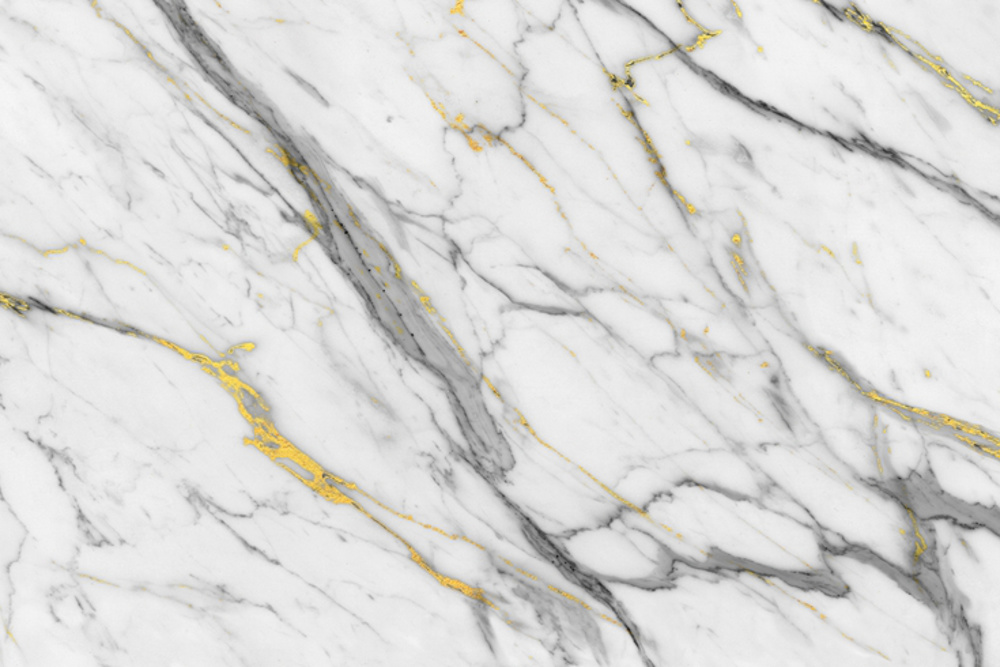
Calacatta marble is a luxury Italian marble with a bright white background and bold veining. This premium natural stone comes from the Apuan Alps in the Carrara region of Italy.
Calacatta’s dramatic vein patterns create high contrast and make each slab unique. The veining colors range from gold and beige to dark gray.
The marble’s rarity makes it a top choice for high-end residential and commercial projects. Only a few quarries in Italy produce Calacatta marble. This limited supply makes it more valuable than other Italian marbles.
What Is Carrara Marble?
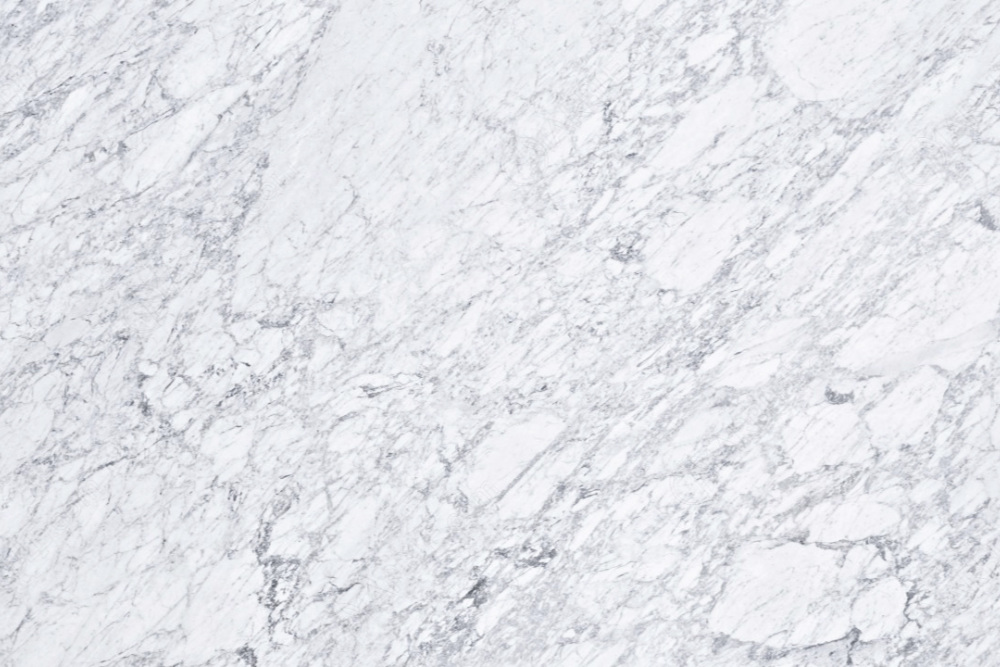
Carrara marble is a light gray Italian marble with feathery gray veining. This natural stone comes from quarries in the Carrara region of Tuscany, Italy.
Carrara marble creates a timeless look that works in traditional and modern designs. Its soft gray veining adds gentle detail without dominating the design.
Carrara marble is more available because quarries produce it in large amounts. The steady supply makes it less expensive than rarer marbles.
Calacatta vs Carrara Marble: Key Differences Compared
Learn the difference between Calacatta and Carrara to make an informed choice.
| Feature | Calacatta | Carrara |
|---|---|---|
| Origin | Carrara region in Italy | Carrara region in Italy |
| Color | Bright white background | Light gray background |
| Veining | Bold, dramatic gray and gold veins | Soft, feathery gray veining |
| Price | Higher cost due to rarity | More affordable and available |
| Availability | Limited supply from few quarries | Abundant supply from established quarries |
| Durability | Scores 3–5 on Mohs hardness scale | Scores 3–5 on Mohs hardness scale |
| Best Uses | Kitchen islands, backsplashes, feature walls | Full countertops, bathrooms, flooring |
| Maintenance | Regular sealing every 6–12 months | Regular sealing every 6–12 months |
Types of Calacatta and Carrara Marble
The marble variety you select changes your project’s look and cost. Know the distinct differences to pick the best fit for your design and budget.
Calacatta Varieties
- Calacatta Gold features warm gold and beige veining on a white backdrop. This marble variety creates luxury focal points in high-end kitchens and bathrooms.
- Calacatta Borghini displays thick gray veining with minimal gold tones. Its bold veining creates striking countertops and feature walls.
- Calacatta Viola shows purple and gray veining that creates unique color combinations. This rare marble variety adds distinctive character.
- Calacatta Michelangelo features thick and sculptural veining that resembles artwork. The striking patterns work best as statement pieces.
Carrara Varieties
- White Carrara offers the lightest gray base with subtle veining. This classic marble variety remains one of the most popular countertop choices.
- Carrara C and CD have consistent gray patterns with uniform veining. These marble grades offer a reliable appearance across large installations.
- Statuario has bright white backgrounds with distinct gray veining. This marble variety blends Carrara’s elegance with Calacatta’s strong veining.
Calacatta vs Carrara: Visual Differences

Calacatta shows high-contrast patterns. Carrara shows softer and more uniform patterns. Know these traits to choose the right stone for your space.
Base Color
- Calacatta features a bright white background that makes rooms feel larger and brighter
- Carrara has a light gray base that creates a soft and subtle appearance
Contrast
- Calacatta shows high contrast between its white background and bold veining
- Carrara displays low contrast with its gray base and similar-toned veining
Vein Thickness
- Calacatta marble has thick veins that spread across entire slabs
- Carrara marble has thin veins that form soft and feathery patterns
Pattern Uniqueness
- Calacatta slabs show different veining patterns that create one-of-a-kind surfaces
- Carrara slabs have consistent patterns that give surfaces a predictable look
Room Impact
- Calacatta brightens spaces and draws attention as a focal point
- Carrara creates calm backgrounds that support other design elements
Also Read: Calacatta Marble: Timeless Elegance in Kitchen and Bath Design
Calacatta vs Carrara: Cost and Rarity
Calacatta marble costs more than Carrara due to its rarity. Calacatta can range from $100-$200 per square foot based on quality, veining, and rarity. Carrara costs $40-$60 per square foot for material alone.
Limited quarry access drives Calacatta’s higher pricing. Only a few quarries in the Apuan Alps produce authentic Calacatta marble. These quarries have strict extraction limits due to environmental regulations.
Carrara’s abundant supply keeps costs lower. Several established quarries produce large quantities of Carrara marble. The steady supply chain makes Carrara more available for homeowners.
Calacatta’s rarity makes it a luxury investment. High demand and limited supply often result in waiting lists. Carrara offers similar Italian marble beauty without the higher cost or availability constraints.
Other cost factors:
- Slab size and thickness requirements
- Finish type (polished vs honed)
- Edge profile complexity
- Installation location and accessibility
- Current market demand
Ready to get exact pricing for your marble selection? Book a design consultation for personalized cost estimates and project planning.
Calacatta vs Carrara: Durability and Maintenance
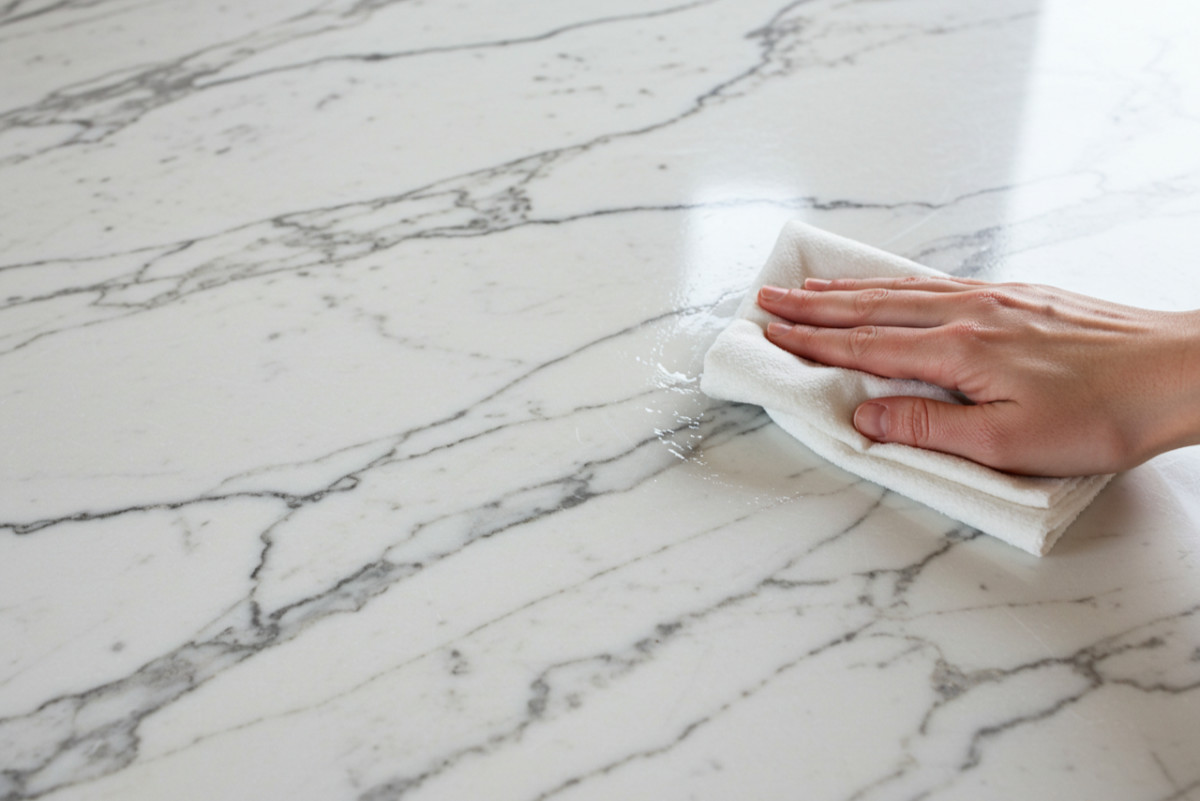
Both Calacatta and Carrara marble offer similar durability. These Italian marbles score 3-5 on the Mohs hardness scale. This rating makes them suitable for residential use with proper care.
Porosity is the main maintenance concern for both stones. Natural marble absorbs liquids that can cause staining and etching.
Both marbles need regular sealing to prevent damage from spills and acidic substances.
Sealing schedule remains the same for both marbles:
- Seal the marble after installation
- Reseal every 6-12 months
- Test with water to see if the seal is still working
- Clean with mild dish soap mixed with warm water
Stain prevention requires immediate cleanup of spills. Wine, coffee, and citrus juices can stain unsealed marble. Acidic substances like vinegar and lemon juice etch the surface even through sealers.
Proper maintenance extends the lifespan of marble beyond 50 years. Clean the surface with mild soap and water to preserve the stone’s beauty. Avoid abrasive cleaners and acidic products that damage the marble surface.
Calacatta vs Carrara: Design and Aesthetic Appeal
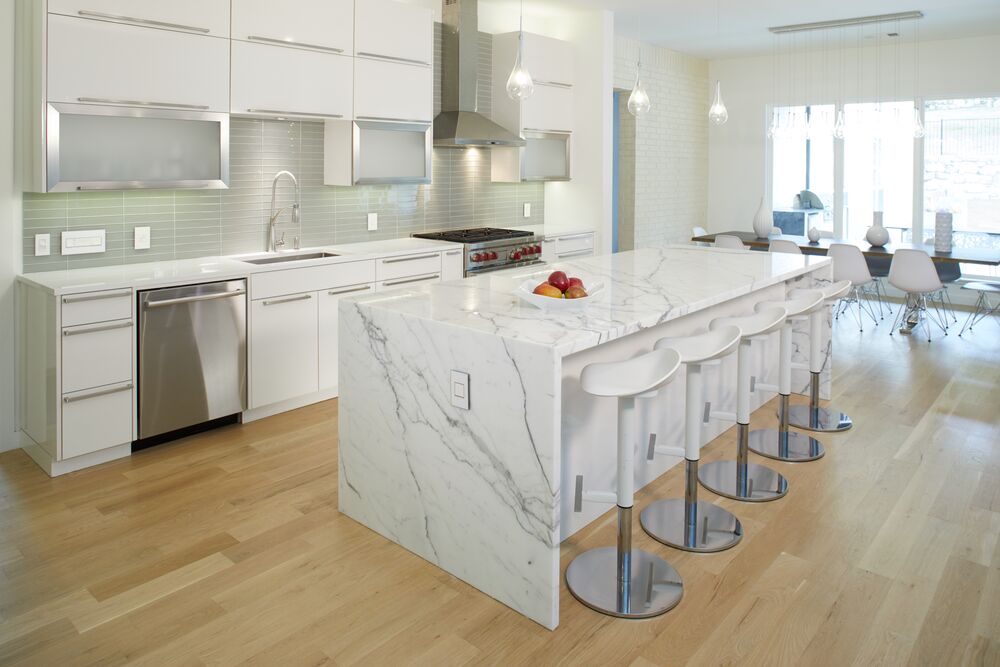
Choosing Carrara or Calacatta marble changes the mood and look of a space. Know the visual qualities to choose marble that suits your design.
Visual Impact
- Calacatta has features with high contrast that stand out as the primary design focus
- Carrara provides gentle backgrounds that keep the attention on other design elements
Color Coordination
- Calacatta’s bright white background pairs with bold cabinet colors and metallic accents
- Carrara’s gray tones complement neutral palettes and soft color schemes
Lighting Effects
- Calacatta reflects more light because of its bright white background
- Carrara softens light with its gray base and creates a warmer ambiance
Design Philosophy
- Calacatta works best in designs that highlight luxury and high-contrast veining
- Carrara suits minimalist approaches that favor subtle veining and timeless appeal
Ready to see how these marbles will look in your space? Visit our showroom to view Calacatta and Carrara slabs in person.
Calacatta vs Carrara: Installation and Fabrication Considerations
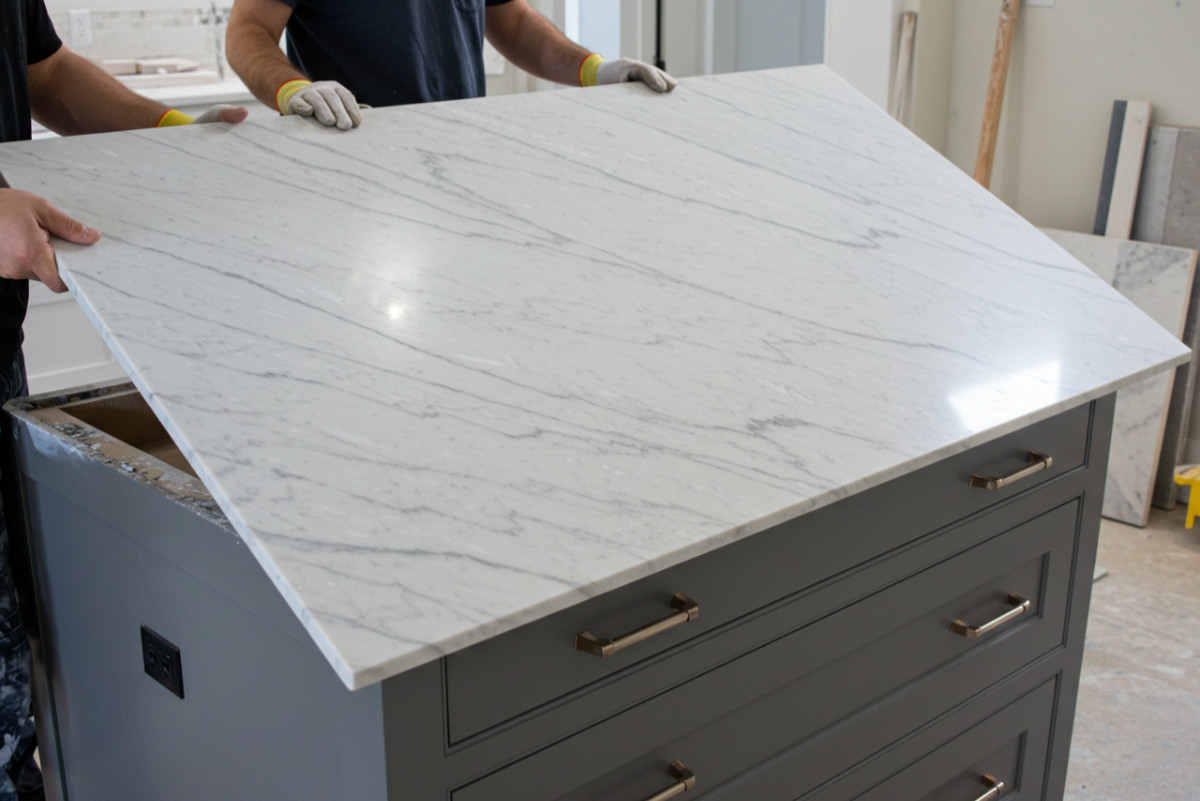
Professional installation ensures your marble investment lasts for decades. Know your fabrication options to budget and set realistic project goals.
Weight and Support Considerations
- Both marble slabs need reinforced cabinet structures because of their weight
- Large overhangs need extra support brackets to prevent stress and cracking
Edge Profile Options
- Mitered edges join at an angle to create a smooth waterfall look
- Eased edges work well for traditional and contemporary designs
- Ogee and bullnose profiles add decorative elements to both stone types
Surface Finish Choices
- Polished finish enhances veining contrast in both Calacatta and Carrara
- Honed finish creates matte surfaces that hide fingerprints and water spots
- Leathered finish adds subtle texture while maintaining natural beauty
Fabrication Considerations
- Calacatta requires careful slab selection to achieve the desired veining patterns
- Carrara offers a consistent appearance across multiple slabs
- Bookmatching creates mirror-image patterns that work well with Calacatta’s veining
Template and Measurement Process
- Both stones need precise digital templating after cabinet installation
- Field measurements ensure a perfect fit around appliances and fixtures
- Professional fabrication prevents costly mistakes and ensures proper seams
Ready to start your marble project? See how the Precision Process delivers flawless results from design to installation.
Calacatta vs Carrara: Best Uses in the Home
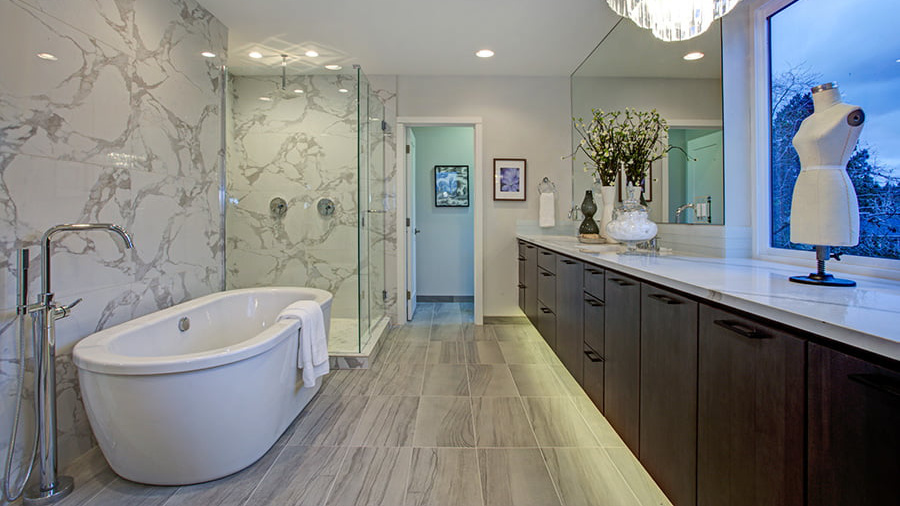
Calacatta and Carrara serve different roles in kitchens, bathrooms, and living areas. Know the best uses to match each marble to the right rooms and design goals.
Calacatta Applications
- Kitchen island as the main centerpiece to anchor open floor plans
- Fireplace surrounds that create stunning focal points in living areas
- Backsplashes in luxury kitchens, where bold patterns add visual interest
- Bathroom feature walls behind vanities for spa-like elegance
Carrara Applications
- Flooring throughout kitchens and bathrooms for timeless sophistication
- Shower walls and bathroom surfaces for classic marble luxury
- Complete kitchen countertops that provide elegant workspace surfaces
- Wall cladding and mosaic installations for subtle texture and pattern
Application Guidelines
- Use Calacatta in small areas to keep its high-contrast look impactful
- Install Carrara in large areas to create a consistent and calm design
- Pair Calacatta accents with Carrara surfaces to add contrast in one space
- Place marble where cleaning and sealing are easy to manage
Room-Specific Ideas
- Kitchen: Use Calacatta on the island with Carrara on the perimeter counters
- Bathroom: Install Carrara on the floors with Calacatta on the accent wall
- Living Room: Build a Calacatta fireplace with Carrara shelves or side tables
Need help choosing the right type of marble for your home? Meet our design team to get expert guidance.
Calacatta vs Carrara: Sustainability and Ethical Sourcing
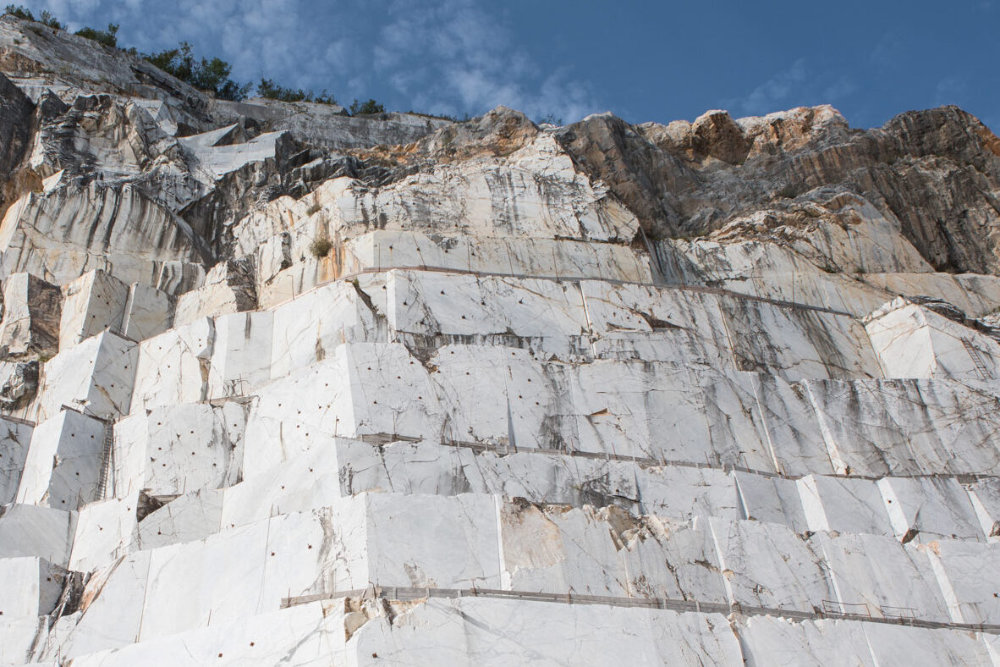
Choosing ethically sourced marble supports responsible mining practices and environmental protection. Italian quarries lead the industry in sustainable extraction and worker safety standards.
Italian Quarry Regulations
- Worker safety regulations exceed international mining industry standards
- Environmental reviews monitor air, water, and ecosystem health during quarrying
- Quarry restoration requirements ensure land rehabilitation after extraction
Limited Extraction Impact on Pricing
- Calacatta’s restricted quarry access drives higher pricing due to conservation limits
- Carrara maintains a steady supply while following sustainable extraction quotas
- Strict quarry regulations limit daily extraction volumes to preserve natural resources
Global Market Context
- Italian quarries produce quality marble, while Turkey and China focus on volume
- The Calacatta and Carrara regions have a reputation for the highest quality standards
- Choosing Italian marble supports centuries-old craftsmanship traditions
Also Read: Sustainability In Countertops
Calacatta vs Carrara: How to Choose for Your Project
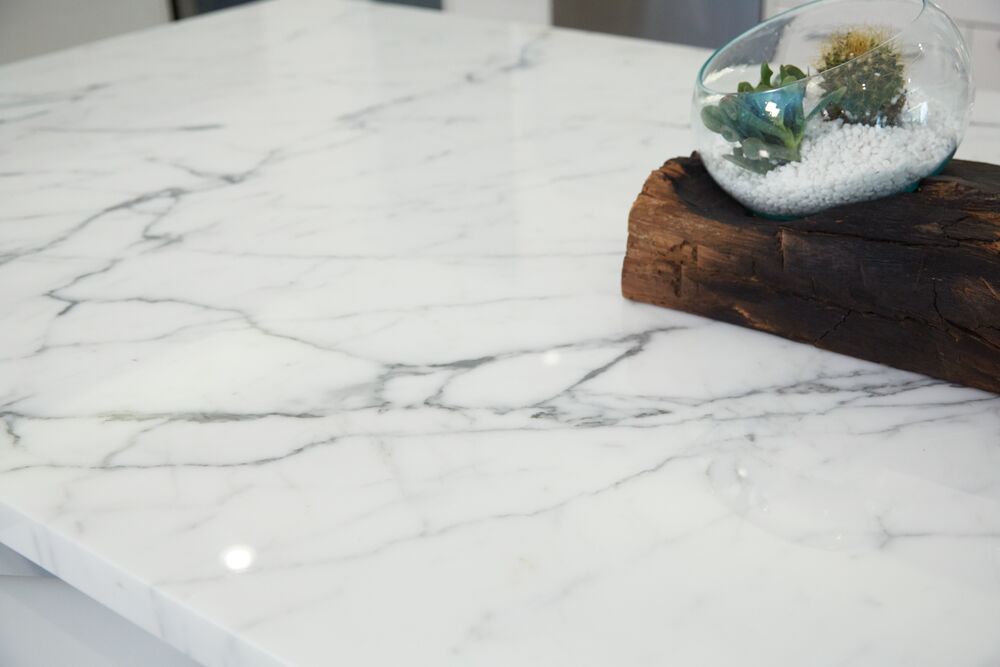
Choosing the right marble means balancing design goals with practical needs. Consider these factors before starting your project.
Budget Considerations
- Choose Calacatta if you want high-end marble with a higher investment
- Select Carrara if you want Italian marble beauty at a reasonable price
- Plan for sealing and maintenance expenses with both marble types
Style Preferences
- Pick Calacatta for luxury designs that create a centerpiece and draw attention
- Choose Carrara for classic and timeless looks that complement various design styles
- Consider your home’s existing finishes and color palette when deciding
Application Requirements
- Use Calacatta for focal points like kitchen islands and feature walls
- Install Carrara for large surfaces like full countertops and flooring
- Match marble choice to room size and natural lighting conditions
Maintenance Comfort Level
- Both marbles require identical sealing schedules and daily care routines
- Consider your lifestyle and willingness to maintain natural stone surfaces
- Factor in professional maintenance costs for long-term marble care
Combining Both Marbles
- Pair Calacatta backsplashes with Carrara countertops to balance contrast
- Use Carrara as the primary surface with Calacatta accent features
- Ensure consistent finish choices when mixing both marble types
Ready to make your marble selection? Schedule a design consultation to see Calacatta and Carrara countertops in our showroom.
Why Choose Precision Countertops
Find the perfect marble for your project’s budget and design goals. Our process eliminates guesswork and prevents costly mistakes during selection and installation.
Our Advantages
- 35 years of family-owned business experience in countertop installation
- Complete in-house process from design consultation to final installation
- Extensive slab gallery with Calacatta and Carrara marble selections
- Expert designers help you choose the perfect marble for your project
- Serving the Pacific Northwest with locations in Portland and Bend
Need help choosing between Calacatta and Carrara marble for your space? Schedule your free design consultation today.
Carrara vs Calacatta Marble FAQs
Answers to common questions about the differences between Calacatta and Carrara marble.
Is Calacatta marble real marble?
Yes. Calacatta is real marble quarried from the Apuan Alps in northwest Italy. This natural stone forms over millions of years through geological processes.
Is Carrara marble real marble?
Yes. Carrara is real marble quarried from the Carrara region in Tuscany, Italy. This natural stone forms through geological processes over millions of years.
Is Calacatta marble durable?
Calacatta marble scores 3–5 on the Mohs hardness scale. It’s a durable natural stone. Proper sealing and routine maintenance extend its durability for decades.
Is Carrara marble durable?
Carrara marble scores 3–5 on the Mohs hardness scale. It’s a durable natural stone. Proper sealing and routine maintenance extend its durability for decades.
What color is Calacatta marble?
Calacatta marble has a bright white background with bold gray, gold, or brown veining. The high contrast creates dramatic patterns that vary across each slab.
What color is Carrara marble?
Carrara marble has a light gray background with soft, feathery gray veining. The subtle color variations create elegant patterns throughout the stone.
Does Calacatta marble stain?
Calacatta marble can stain without proper sealing due to its natural porosity. Regular sealing every 6-12 months prevents stains from wine, coffee, and other liquids.
Does Carrara marble stain?
Carrara marble can stain without proper sealing due to its natural porosity. Regular sealing every 6-12 months prevents stains from wine, coffee, and other liquids.
Where does Calacatta marble come from?
Calacatta marble comes from quarries in the Apuan Alps near Carrara, Italy. Limited quarry sites make this marble rarer and more expensive than other varieties.
Where does Carrara marble come from?
Carrara marble comes from the Carrara region in Tuscany, Italy. Many established quarries produce steady supplies of this classic Italian marble.